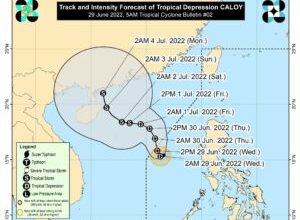Software we’re headed

YOU KNOW you’re living in a completely new era of mobility when “software-defined vehicles” start becoming a thing. Back in the day, the involvement of computer software interfacing with us drivers was usually limited to navigation functions and multimedia options. But these days, we talk about connected cars and autonomous driving — and this is only the tip of the iceberg when we try to imagine where the world’s fast-evolving software technology is taking us.
Hyundai Motor Group, for one, has decided to keep astride with such advancements, and has very recently announced its future road map for software-defined vehicles, during an online global forum entitled “Unlock the Software Age.” Basically, it was an impressive revelation of the company’s new goal to transform all its vehicles into software-defined vehicles or SDVs by 2025. If you think about it, that’s less than three years from now — and that’s why from 2023, all the newly launched vehicles of Hyundai will already be capable of benefiting from over the air or OTA software updates, which will allow for car performance and functions to be remotely upgraded, eliminating the need to take them to a service center for such updates.
“By transforming all vehicles to software-defined vehicles by 2025, Hyundai Motor Group will completely redefine the concept of the automobile and take the lead in ushering in a never-before-experienced era of mobility,” shared Hyundai Motor Group R&D Division President and Head Chung Kook Park. He added, “Creating visionary vehicles empowered with the ability to evolve through software will enable customers to keep their vehicles up to date with the latest features and technology, long after they have left the factory.”
Vehicle functions, such as those meant for safety, convenience — connectivity, security and driving performance — will soon qualify for over-the-air (OTA) software upgrades. And to keep the ball rolling, the Hyundai group plans to invest about KRW18 trillion (around P742 billion) into even more resources — including the formation of a Global Software Center where SDV development could be further accelerated.
And mind you, these transformations are not exclusively geared toward electric vehicles, but will also apply to vehicles with internal combustion engines. In fact, all of Hyundai’s vehicle segments sold worldwide are destined to become software-defined by 2025.
Another interesting development scheduled for take-off next year is Hyundai’s FoD or Features on Demand service. This will enable users to select and purchase particular features they want to have in their car, without having to physically bring it to the shop.
Moreover, the Hyundai Group has also taken the route of developing a shared hardware and software platform for their vehicles (Integrated Modular Architecture), in order to enable parts sharing and reduce R&D and manufacturing costs. Its new EV platforms are eM and eS.
eM is a passenger-EV-dedicated platform, whereas eS is the platform for purpose-built vehicles. The eM will provide a 50% improvement in driving range, based on a single charge; while the eS is meant for PBVs (purpose-built vehicles).
“Hyundai Motor Group’s data platform will not only be simply for driving. It will also play an important role in enhancing the convenience and diversity of the customer’s mobility experience by engaging throughout the vehicle’s entire life cycle,” said Executive Vice-President and Head of ICT Innovation Division Eunsook Jin, adding: “Going forward, we’ll also help create a new mobility ecosystem, connecting cars with other mobility devices, based on data connectivity and scalability.”
What complex albeit exciting changes to come! Congratulations Hyundai Motor Group, on pursuing this big move.




